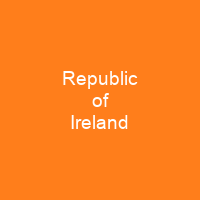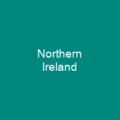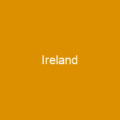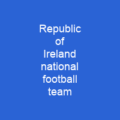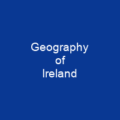Ireland, also known as the Republic of Ireland, is a country in north-western Europe occupying 26 of 32 counties of the island of Ireland. The state was created as the Irish Free State in 1922 as a result of the Anglo-Irish Treaty. It is a unitary, parliamentary republic with an elected President who serves as the largely ceremonial head of state. The head of government is the Taoiseach, who is elected by the Dáil and appointed by the President.
About Republic of Ireland in brief

During the Famine, from 1845 to 1849, the island’s population fell by over 8million. This set the pattern of emigration to the United States, resulting in a constant decline in population for the rest of the century. In an Irish context it is often referred to as ‘the 26 Counties’ or ‘the republican state’ The state had the status of Dominion until 1937 when a new constitution was adopted, in which the state was named ‘Ireland’ and effectively became a republic. It was officially declared a republic in 1949. It joined the European Economic Community, the predecessor to the European EU, in 1973. Ireland achieved considerable prosperity between the years of 1995 and 2007, which became known as ‘Celtic Tiger period’ This was halted by an unprecedented financial crisis that began in 2008, in conjunction with the concurrent global economic crash. Since the signing of the Good Friday Agreement in 1998, the Irish government and Northern Ireland Executive have co-operated on a number of policy areas under the NorthSouth Ministerial Council created by the Agreement. The Irish government had no formal relations with Northern Irish for most of the twentieth century, but during the 1980s and 1990s the British and Irish governments worked with the Northern Ireland parties towards a resolution to \”the Troubles\”. It was not until the 1998 Good Friday agreement that it used the name ‘Republic of Ireland’ for the state.
You want to know more about Republic of Ireland?
This page is based on the article Republic of Ireland published in Wikipedia (as of Dec. 08, 2020) and was automatically summarized using artificial intelligence.
